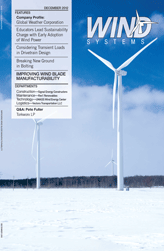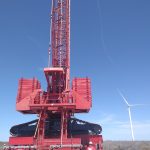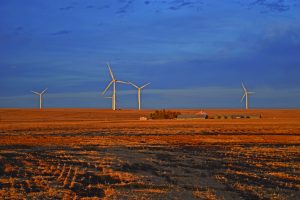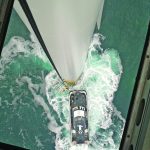Previously, I discussed the fluid-structure interaction problems in floating offshore wind turbines. One of these problems is vortex-induced vibrations of mooring lines. In an offshore wind platform, the mooring lines are used to provide a sufficiently stable platform for the wind turbine. The interaction of the mooring line and the fluid flow around it can result in vortex-induced oscillations of the mooring line, which can result in its failure due to fatigue.
In general, when a bluff body (an object with a blunt cross section as opposed to a streamlined object) is placed in flow, shear layers are formed because of the separation of the boundary layers around the body. The interactions of the shear layers formed on the two sides of the body result in vortex shedding downstream, which forms a Von Kármán Vortex Street. The shed vortices result in an oscillatory external force exerted on the body. Consequently, if the body is free to move, the frequency of flow-induced forces can become close to the natural frequency of the structure, resulting in the structure’s oscillation both in the cross-flow direction (perpendicular to the flow) and the inline direction (inline with the flow). These are called vortex-induced vibrations (VIV). The amplitude of VIV for a cylinder placed in flow can reach up to 1 cylinder diameter in the transverse direction, and up to 0.3 diameters in the inline direction. Due to the nature of vortex shedding, the frequency of oscillations in the inline direction is twice the frequency of oscillations in the cross-flow direction. Any structure undergoing VIV is at the risk of failure due to fatigue.
Mooring lines of conceptual floating wind turbine designs can be placed at an angle with respect to the incoming flow. While there are many studies on VIV of cylinders placed perpendicular to the flow, there are very few studies on the VIV of cylinders placed at an angle with respect to the oncoming flow. To understand the vortex shedding behind a fixed inclined cylinder, the independence principle (IP) has been used. The IP assumes that an inclined cylinder behaves similarly to a vertical cylinder, if only the component of the free stream velocity normal to the cylinder axis is considered. The IP neglects the effect of the axial component of the flow, which seems reasonable for small angles of inclination, but not for large angles.
To understand the VIV of an inclined cylinder in flow, we conducted a series of experiments on a flexibly mounted rigid cylinder placed on an incline to the oncoming flow with various angles of inclination (from 0 to 75 degrees) in a range of Reynolds numbers from 500 to 4,000. We mounted a rigid cylinder on springs and air bearings and placed the system in the test section of our recirculating water tunnel at the Fluid-Structure Interactions lab at the University of Massachusetts Amherst. The two air bearings were mounted on two rigid parallel shafts located atop the water tunnel test section, resulting in a one-degree-of-freedom system with oscillations in the cross-flow direction only. The water tunnel has a test-section of 38 cm × 50 cm × 150 cm, a maximum flow rate of 1.0 m/s, and a turbulence intensity of less than 1 percent up to a flow velocity of 0.3 m/s.
We increased the flow velocity from zero at small steps, and at each step measured the cross-flow displacements using a non-contacting displacement sensor. Every test was repeated several times to ensure that the results were repeatable. Even at high angles of inclination, we observed large-amplitude oscillations. As the angle of inclination was increased, the lock-in range (the range of dimensionless flow velocities for which the cylinder oscillates with a large amplitude) started at a higher dimensionless velocity. When only the normal component of the oncoming flow was considered, the onset of lock-in was observed to be at the same normalized flow velocity for all angles of inclination except for 75°. However, the width of the lock-in region, its pattern, the maximum amplitude of oscillations and its corresponding normalized reduced velocity did not follow the results of a normal-incidence case entirely.
In general, we showed that the IP is valid for very small angles of inclination only, and for larger angles of inclination, the influence of the axial component of the flow needs to be considered during the design process. We have extended these studies to the case of a flexible cylinder placed inclined to the oncoming flow. In a future column, I will discuss the results from that project.
In summary, VIV or floating platform mooring lines is a critical factor to ensure their reliable operation in the ocean environment. My research is striving to better understand this complex phenomenon.




































